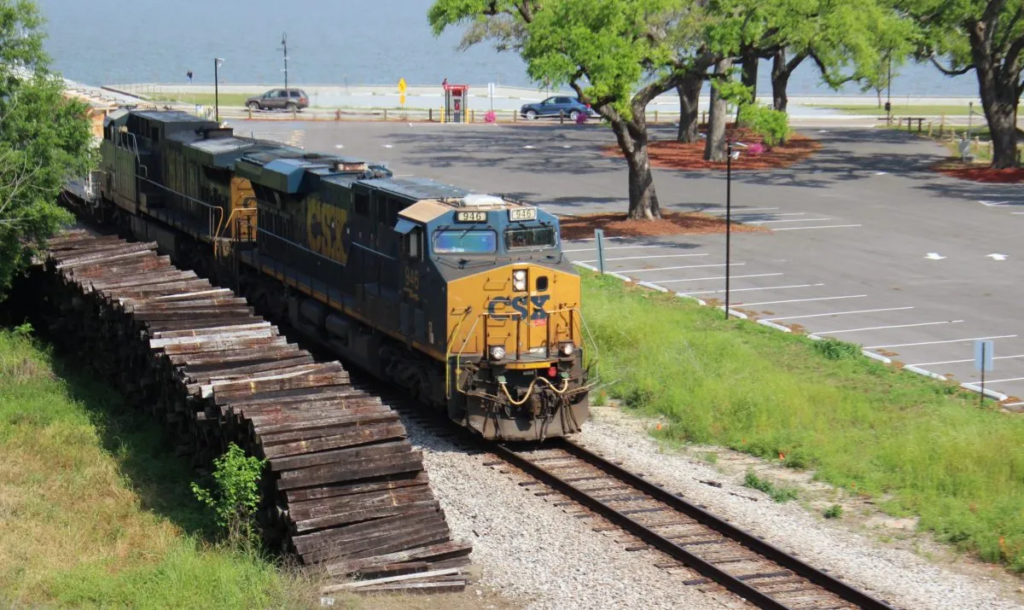The STB is finally acting to improve freight railroads. Will it be enough?

After years of looking the other way while deliveries suffered, the Surface Transportation Board finally ruled that freight railroads have to improve their service. Here’s what it could mean for goods and travelers alike.
On Friday, May 6, the Surface Transportation Board (STB) issued a ruling that will require the largest (Class I) freight railroads to improve their anemic service nationwide. These companies are BNSF Railway, Kansas City Southern Railway Company (KCS), CSX Transportation, Inc, Norfolk Southern Railway (NS), Union Pacific Railroad (UP), Canadian National Railway (CN), and Canadian Pacific Railway (CP).
Under this latest STB ruling, the four Class I carriers with the most significant problems—BNSF, CSX, NS, and UP—will need to submit service recovery plans detailing the specific actions they’ll each take to improve service, including the specific metrics they’ll use to evaluate their progress. Those four will also have to participate in biweekly conference calls with Board staff to ensure they are making significant progress. All seven Class I carriers will be required to submit weekly performance data and monthly employment data to the STB. The STB will receive technical assistance from the Federal Railroad Administration (FRA) in its implementation of this ruling.
Turning the tide
For years, the major freight railroads have trimmed their workforce and overworked remaining staff to report larger profit margins to shareholders, all without regard for service quality. The pandemic has worsened this issue, causing frequent and extended delays in delivery time for key goods and services. For such a critical national system as freight rail, this has been an economic disaster.
On April 26th and 27th, the four relevant freight railroads testified in front of the STB and admitted their poor service, but they tried to blame national trends and claim they could fix the issues on their own. However, the testimony they gave, such as frequency data that was contradicted by video evidence, was often uninformed and irrelevant, calling into question the validity of their commitments to improve service. The STB likely felt the same, as this aggressive ruling reflects a lack of faith in the freight railroads to address the current crisis.
Though this ruling is not surprising, it is encouraging. We are pleased to see the STB finally exercising their oversight in a clear and demonstrable way, revealing their intent to monitor and fix this endemic issue. They have always had the authority, but have historically been far too lenient on the freight railroads, which allowed the situation to get to its current point.
On May 12th, STB chairman Martin Oberman testified in front of the railroad subcommittee of the House Transportation and Infrastructure Committee, where he laid out a vision for a more aggressive STB. He said the STB can and must go further than rulings like this one, and said that “the Board can use its existing authority to mitigate [the problems facing the rail industry] in a meaningful way.”
We should take these bold statements with a grain of salt. The freight rail industry has not been interested in complying with federal regulations unless forced to do so, so this will likely be a long and drawn out fight despite Chairman Oberman’s commitment to a rapid timeline.
But still, such a bold step from the STB signals a paradigm shift. In the past, the STB has been all but powerless to stop the dominance of the freight railroad companies over the national rail network. But a network so critical to national security should be regulated accordingly, and the STB seems to finally be arriving at the same conclusion.
Impact on passenger rail
This ruling and its implementation might have some benefits for passenger rail, too. For most of the national network, passenger rail service runs on rail owned by the Class I carriers. So if freight railroads continue to be required to improve service, it might improve conditions on the nation’s rail network enough to support improved passenger rail service. In fact, in Chairman Oberman’s testimony, he added that he remains “confident in the Board’s preparedness to meet its responsibility to enforce on-time passenger rail performance.”




















3 Comments